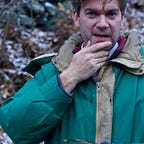Classic Parenting: The Librarian Who Measured the Earth
A Great Picture Book for the Classicist (or Scientist! or Librarian!) with Kids
Finding books to read with your toddlers sounds like an easy task. Until, that is, you actually arrive at the library or bookshop, only to be greeted by hundreds, if not thousands, of children’s books. You begin to glance at the covers, but your toddler starts climbing a chair to get at a library computer, or dumping a box of legos onto the floor, and you have to intervene before things get worse. Then your toddler sees a book you have at home. She toddles over, hands it to you, and says, “Read it?” You say, “No, honey, we’re going to find some new books today,” which elicits screams and tears: “Read this one! Read this one!” So it’s Curious George for the ten millionth time. And it’s a fine book, but it hardly “sparks joy” for you anymore. Still, you console yourself as you look around: “Why bother trying to find new books? Look at all of them. By the time I get enough time to do a thorough investigation of what the best children’s books are, my kids will all have grown up.”
And you’re not wrong. For the past year and a half I’ve been part of a project creating online assessments for children’s books, which has involved reading hundreds of books and getting to know at least the titles of thousands more. I haven’t even scratched the surface of this world. Despite a professional involvement in the field, I have to do what it seems all parents do with children’s books: return to favorites from my own childhood, get recommendations from others, and let chance do the rest.
The good news is that it may not make too much difference. Children seem to enjoy the dedicated time with an adult at least as much as the book itself. They certainly have preferences, but I’ve actually had success with reading adult books to them (especially reference books about animals), as long as it seems clear to them that I’m enjoying the book myself. In fact, in the trade, books that adults read to children are known as “AD” (“adult-directed”) books, and the successful ones succeed in part because they appeal to adults. You have to want to share their contents with your children.
One such book I have found, and which I recommend to all parents who love Classics, is The Librarian Who Measured the Earth, written by Kathryn Lasky and illustrated by Kevin Hawkes. I had gotten a list of newly assigned books, and though I wasn’t assigned the book, the title struck me — the juxtaposition of librarian and earth-measuring seemed unusual — and I learned after investigating that the book was about Eratosthenes, the head of the Library (“Museum”) of Alexandria who in 200 B.C. calculated the circumference of the Earth more or less accurately. I was all the more curious to read it.
The book was on the juvenile biography shelf at my local library in Queens, shelved between biographies of Eleanor of Aquitaine and Gloria Estefan (God, how I love the world — who would have thought that Miami Sound Machine would end up next to the Museum of Alexandria thanks to the alphabetical system invented by those same Alexandrian librarians?).
Online reviews of the book have complained that even though it is a picture-book, its text actually attempts to explain, in some detail, how Eratosthenes contrived to measure the Earth’s circumference, which is technical and difficult. An eight-year-old might have a hard time reading the book. But it functions perfectly as an AD book. My three kids (aged 2, 2, and 1) listened to the whole thing with obvious interest, asking questions about the pictures and being entertained the whole time. I, meanwhile, enjoyed trying to follow Eratosthenes’ ingenuity, and I acquired a fairly deep understanding of how Eratosthenes did it — deeper, I’m afraid, than would be useful at any cocktail-party save one out of the Big Bang Theory. Precisely because of this intellectual complexity, it remains a book I’m willing to re-read to the kids. And the drawings are not only beautiful to look at but fascinating for the children.
And something remarkable happened just after our first reading. My oldest daughter is named Mary, and my youngest is Eva. After we read the book, Mary called her sister, entirely sua sponte, “Evatosthenes.” Mary and her twin brother John found this hilarious, and almost a year later, they still use this as a nickname for their sister. As we all know, Greek names like Eratosthenes can be daunting for English speakers, even adults. But these two-year-olds were completely comfortable with a name like Eratosthenes, and could use it as the basis for jokes of their own invention, simply because they had been exposed to it. I felt grateful to Kathryn Lasky and Kevin Hawkes and Scholastic (the publisher) for making such a moment possible, and happy that my work had led me to the book. It deserves a place on the shelf of any parent interested in the Classics. Or science. Or libraries.
[This article is part of a series called Classic Parenting, for parents who wish to bring the Classics home. For more articles, see the links below.]
John Byron Kuhner is former president of SALVI, the North American Institute of Living Latin Studies, and editor of In Medias Res.
